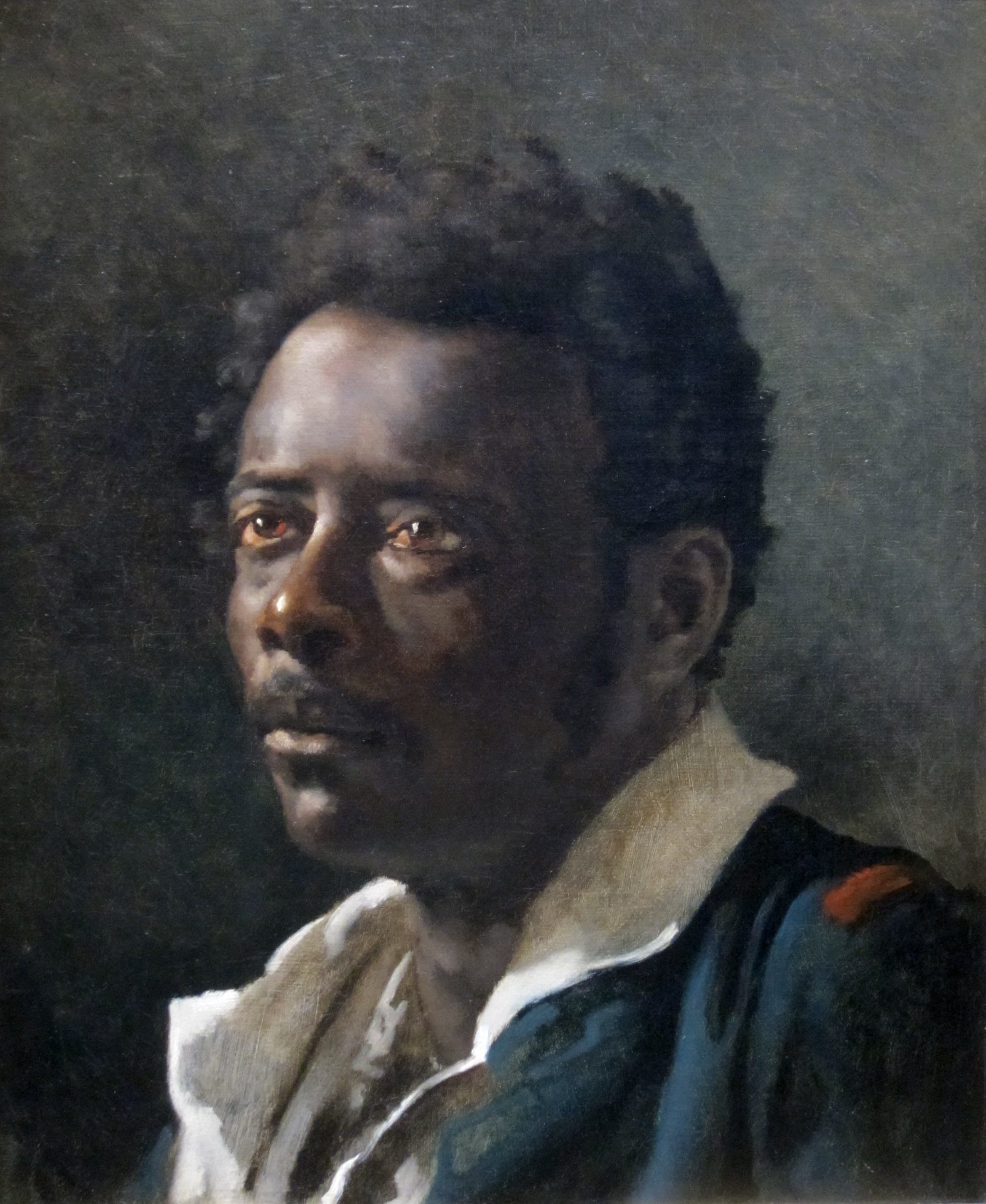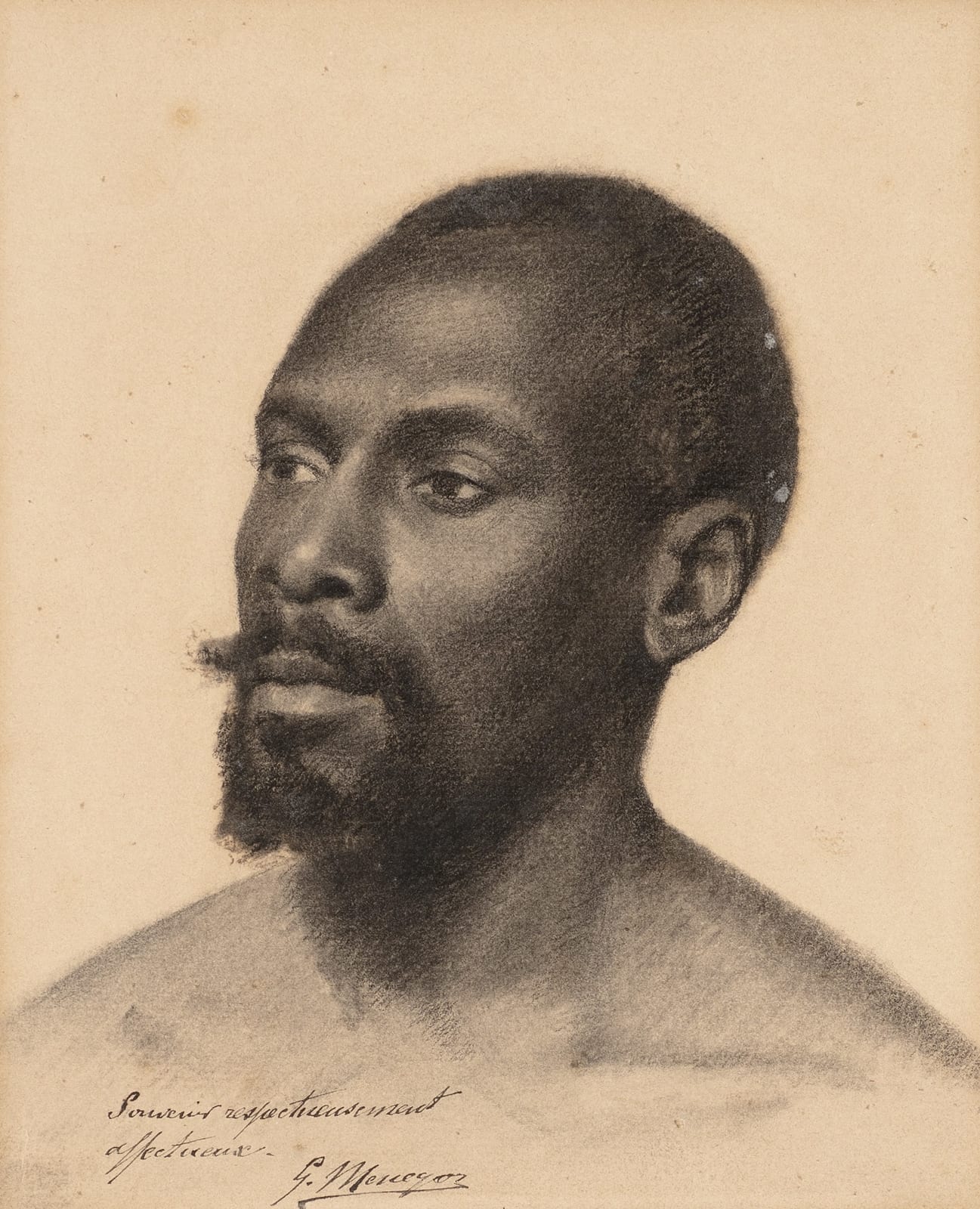Gustave Ménégoz (1858 - 1934)
Head study of a man
Inscribed and signed: Souvenir respectueusement / affecteux. / G.Menegoz
Charcoal on paper
19.3 x 16.4 cm. (7 ½ x 6 ½ in.)
Provenance:
Head study of a man
Inscribed and signed: Souvenir respectueusement / affecteux. / G.Menegoz
Charcoal on paper
19.3 x 16.4 cm. (7 ½ x 6 ½ in.)
Provenance:
Private Collection, France.
This head study of a black man is a rare work by Gustave Ménégoz, a little-known sculptor based in Caen. Born in Bienville, 90 kilometers north of Paris, Ménégoz went to the capital in 1878, where he studied sculpture at the École des Beaux-Arts under Alexandre Falguière and Paul Dubois. He moved to Caen to teach drawing and was later appointed director of the Musée de Beaux-Arts de Caen, spending the rest of his life in Normandy.
The primary interest of the present study is the subject, rendered in a refined academic style, with Ménégoz building up the volumes and details with a skilful use of charcoal. Though it is impossible to be definitive, the likelihood is that this study was executed in Paris, whilst Ménégoz was studying there: though exact figures are hard to come by, Paris had a sizeable black population, certainly far greater than any other city in France. Furthermore, black models were frequently emplyed in life drawing classes at the École des Beaux-Arts.
Though the black population of France at the close of the late 19th century was comparable to that of Great Britain, for example, black models were employed far more frequently in France than in other countries. This interest in black models goes back to Géricault and a Haitian-born model called Joseph. Joseph came to Paris with a troupe of acrobats and was spotted by Géricault, who used him as a model for three black figures in his famous Raft of the Medusa, as well as painting an independent portrait study of him (fig. 1). Joseph went on to model for other prominent artists and became a professional model at the École des Beaux-Arts in 1832, receiving a salary of 46 francs. No one of Géricault’s generation was more highly respected by younger artists, and the example he set may partly account for the sharp increase in the number of images of black models and sitters painted in the Restoration period and over the second half of the 19th century.

Fig. 1, Théodore Gércault, Portrait Study of Joseph, oil on canvas, 47 x 39 cm, The J. Paul Getty Museum
Though there is still much we do now know, tremendous strides have been made in understanding the role of black models in France, following the recent exhibition Le Modèle Noir, de Géricault à Matisse. Between 1900 and 1930, the registers of the École de Beaux Arts lists around 40 black and Asian models amongst a total of 600; a minority but not an insignificant one. And it is worth noting that this is not the totality of black models active in Paris at this time. Like their white counterparts, there were both occasional models, using this activity to supplement an income, and professional models for whom the work was full-time. Painting a black model challenged a young artist, offering them the ‘possibility to study, in a different way, the effects of light on the body and the relationship between the figure and the background’.[1]
[1] E. Bégue and I. Pludermacher, ‘Les Modéles Noirs dans le Paris du XIXe siècle et du début du XXe siecle’ in Le Modèle Noir de Géricault à Manet (exhibition catalogue), Paris 2019, p. 195.



